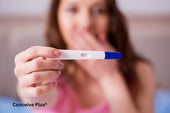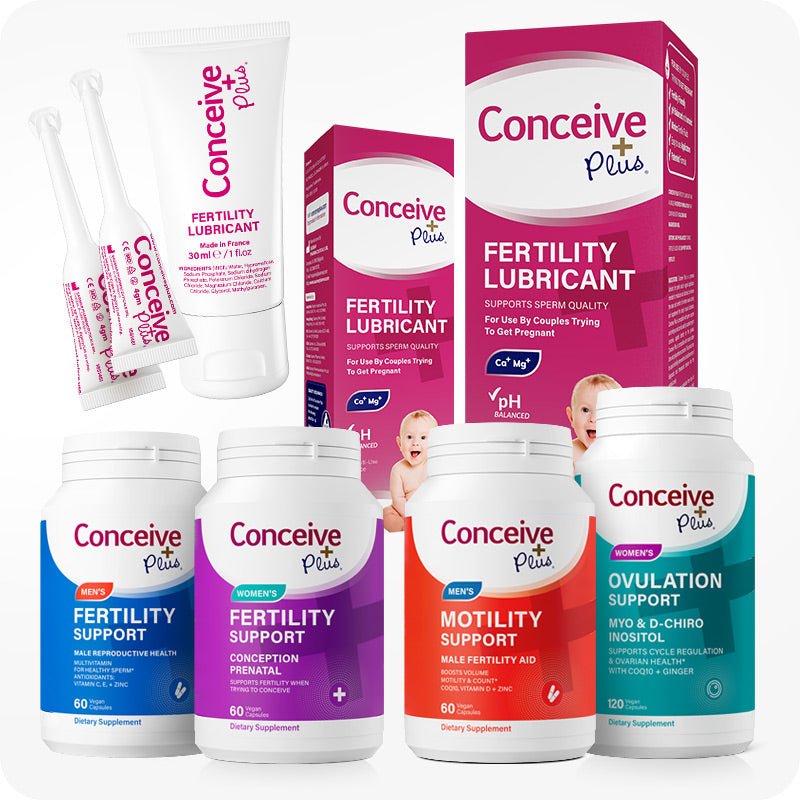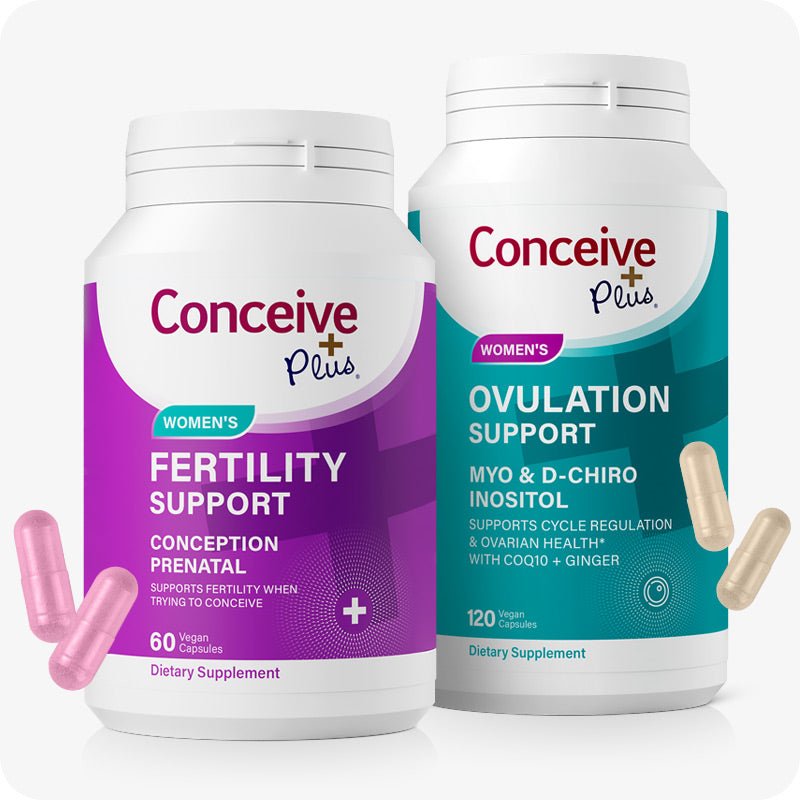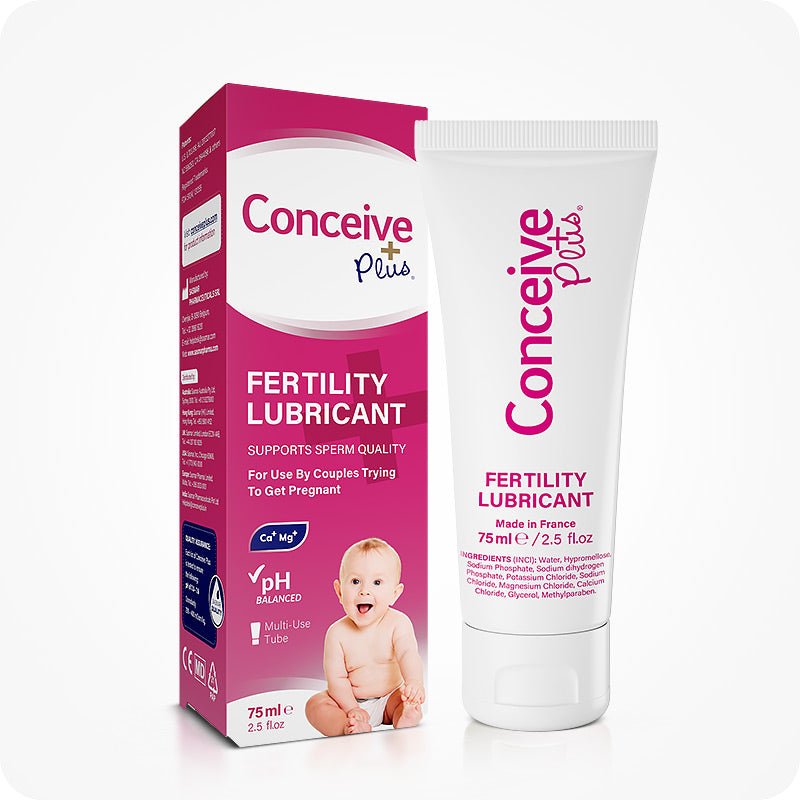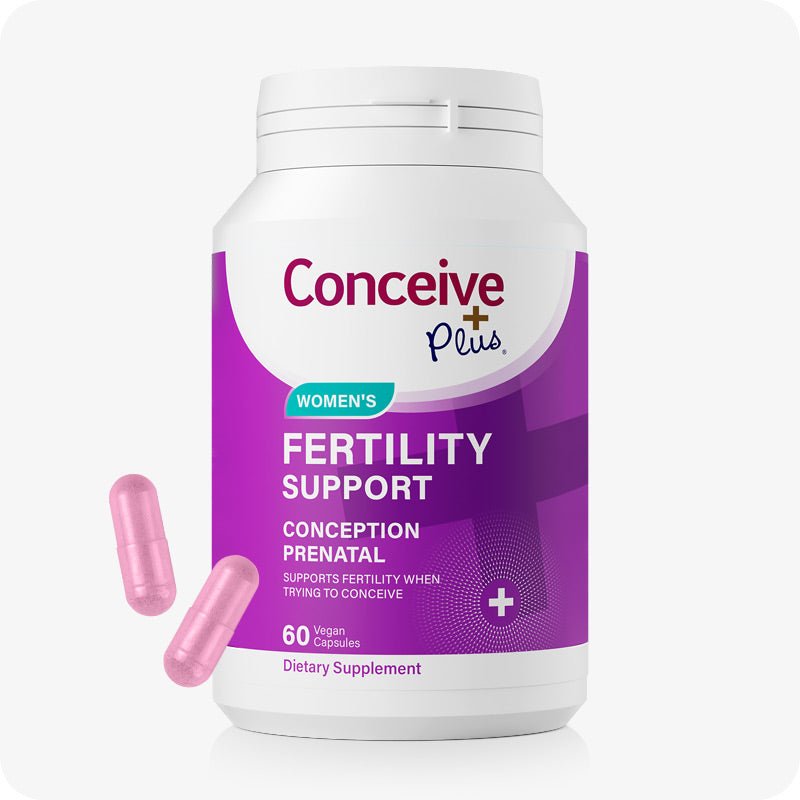Condom and Pull Out Method to Avoid Pregnancy
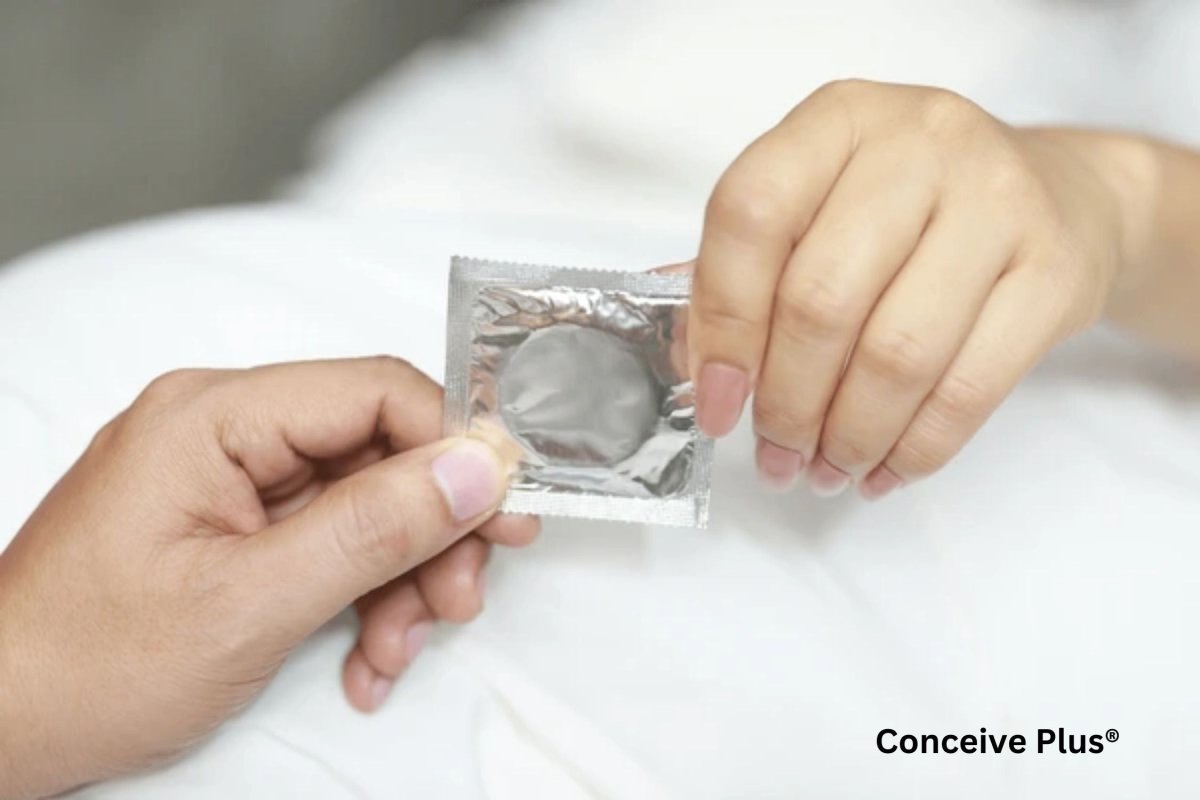
Intimacy is a natural and important part of relationships, but many couples want to enjoy it without the worry of an unplanned pregnancy. It is common for couples to delay pregnancy until they are emotionally or financially ready.
There are different contraceptive methods to achieve this [1]. Condom and pull out method are two common contraceptive options that are easy to use.
In this article, we will explain how condoms and pull-out methods work and what the chances are that these options fail to avoid pregnancy. This article also includes some other contraceptive methods to help you make an informed decision.

Why People Choose to Avoid Pregnancy?
Avoiding pregnancy is a personal choice influenced by many factors. Some couples want to focus on their careers or finances before having children. Others may already have kids and feel their family is complete.
Such couples want to engage in sexual activities for intimacy or closeness but want to avoid pregnancy as a result. Using effective contraceptive methods allows couples to enjoy a healthy sex life without the stress of an unplanned pregnancy.
Condoms: A Reliable Barrier Method
Condoms are thin, flexible barriers made from materials like latex or polyurethane. They are worn on the male penis or inserted into the female vagina during intercourse. They serve as a barrier to prevent sperm from entering the vagina [2]. There are two types:
- Male condoms: Male condoms are thin, stretchy coverings worn over the penis during sex to prevent sperm from entering the vagina. Male condoms are more popular and effective compared to female condoms in protecting against pregnancy and sexually transmitted infections (STIs) [3].
- Female condoms: Female condoms are soft, flexible pouches that are inserted into the vagina before intercourse to prevent pregnancy and protect against STIs. These punches collect the sperm during intercourse, preventing the entry of sperm into the vagina.
Effectiveness of Condoms in Preventing Pregnancy
Studies show that using condoms during intercourse can prevent pregnancy in 98% of cases [4]. This means only 2 out of 100 couples using condoms conceive, while 98% of couples successfully avoid conception.
In addition to preventing pregnancy, condoms also protect against sexually transmitted infections (STIs), making them a dual-purpose option. These are especially essential for people who actively engage in sexual activities with multiple partners since this increases the risk of STIs.
Tips for Proper Condom Use
Here are some tips that can help you increase the effectiveness of condoms in preventing conception:
- Always check the expiration date on the package.
- Before using, ensure the package isn't damaged.
- Use a new condom for every act of intercourse.
- Put the condom on before any genital contact occurs.
- Use water-based or silicone-based lubricants to prevent breakage.
Pros and Cons of Using Condoms
Condoms are affordable and widely available compared to many other contraceptive methods. They are effective in preventing pregnancy up to 98%, which is significantly higher than many other expensive contraception options. Condoms can also protect against STIs, which some other contraceptive methods such as pills don't. Also, condoms are very easy to use and don't require a prescription.
Condoms are not perfect, like any other contraception option. Some people feel that using condoms reduces the sensation and impacts the sexual experience. They can break if you don't know how to use them properly, resulting in unplanned conception.
The Pull-Out Method: Withdrawal Before Ejaculation
The pull-out method, also known as withdrawal, involves the man pulling out before ejaculation. But can you get pregnant if man pulls out, or can you get pregnant if the guy pulled out before ejaculation?
Effectiveness of the Pull-Out Method
With perfect use, the pull-out method is about 96% effective. However, the perfect use of this method isn't always possible, and the typical effectiveness of this method is around 80% [5]. Different factors like timing, self-control, and experience play a big role in its success.
Pros and Cons of the Pull-Out Method
Unlike any other contraception option, the pull-out method is free and always available. You don't need to buy anything like devices or medications for this method to work. It also doesn't cause any adverse impacts on the hormones, unlike some contraception pills.
The downside of this method is that it requires self-control and perfect timing. Studies show that the pre-ejaculate fluid can contain sperm, so even if you pull out before ejaculation, there is a risk of pregnancy [6].
This answers the common question about the pull out method which is, can you get pregnant even if he pulls out. Since this method involves the direct contact of genitals, it doesn't protect against STDs.
Combining Condom and Withdrawal Method
Many people in curiosity often find themselves asking, what if they combine pull out with condom? Well, pulling out condom is a good idea, and condoms and the pull-out method together significantly reduce the risk of pregnancy.
Condoms serve as a physical barrier and also protect against STIs while withdrawing before ejaculation adds an extra layer of protection. This combination is a great choice for couples looking for maximum peace of mind.
Common Myths About Condom and the Pull-Out Method
Here are some common myths that you may have heard related to condoms and pull-out method for birth control:
Myth 1: Condoms always break
Condoms rarely break if you use them following the guidelines. The guidelines include avoiding using a single condom for multiple intercourse acts and avoiding using expired or already opened condoms. Proper handling and lubrication can also prevent condoms from breaking.
Myth 2: The pull-out method doesn't work
It is true that the pull-out method is not as reliable as other methods, but it can be effective if you know how to do it properly. Once you know how to use this method accurately, you can enjoy this free-of-cost and always-accessible contraception method.
Myth 3: Condoms reduce intimacy
Some people complain that using condoms reduces the sensations and negatively impacts the sexual experience. However, buying a condom of proper fitting and using lubricants helps maintain a natural experience.
Myth 4: Wearing Double Condoms Is More Effective
Some people believe that using double condoms for intercourse will increase the effectiveness of condoms in preventing pregnancy. However, this is not the case because double condoms can generate friction between two layers and increase the risk of condom break during intercourse.
Other Contraceptive Methods to Consider
If you feel that using condoms will influence your sexual experience or if you are not confident in yourself for the pull-out method, there are some other contraceptive methods that you can choose. These are:
-
Hormonal Options
Hormonal methods like birth control pills, patches, injections, and implants work by altering hormone levels to prevent ovulation [7]. When there is no ovulation, there is no egg available for fertilization.
If you choose birth control pills as contraception, you need to take them daily at the same time for maximum effectiveness. Patches, injections, and implants offer a longer solution, but you need the assistance of a healthcare provider. Remember that contraceptive medication can cause adverse effects like mood changes, headaches, or weight gain.
-
Long-Acting Reversible Contraceptives (LARCs)
LARCs include intrauterine devices (IUDs) and hormonal implants, which provide long-term protection against pregnancy [8]. IUDs are small devices placed in the uterus, and they can last 3 to 10 years depending on the type.

Hormonal implants are tiny rods inserted under the skin of the arm and work for about 3 to 5 years. These methods are very effective and require little maintenance once inserted. However, a healthcare provider must place and remove them for effectiveness and safety.
-
Permanent Solutions
Permanent contraception includes sterilization methods like vasectomy for men and tubal ligation for women. A vasectomy involves cutting or blocking the tubes that carry sperm [9]. On the other hand, tubal ligation blocks the fallopian tubes where fertilization normally occurs [10].
These procedures are highly effective and designed for people who are sure they don't want children in the future. People choose these methods as a permanent solution, but reversal is sometimes possible.
-
Fertility Awareness Methods (FAMs)
A woman is not always fertile throughout her menstrual cycle. During the 28-day cycle, she has some fertile days called ovulation days and other non-fertile days [11].
FAMs involve tracking natural body signals, like basal body temperature, cervical mucus, and menstrual cycles, to determine fertile and non-fertile days. One can lower the risk of pregnancy by avoiding intercourse during fertile days.
This method requires an understanding of your menstrual cycle and tracking ovulation accurately. Fertility awareness methods are cost-free but are less effective than other methods.
-
Emergency Contraception
Emergency contraception is a backup option that a couple can use after unprotected sex or contraceptive failure, like a condom breaking. Emergency contraceptive pills, also known as the morning-after pill, work by delaying ovulation [12]. Delaying ovulation means the egg won't be present until sperm cells are alive in the uterus, preventing fertilization and pregnancy.
Another option is the copper IUD, which can be inserted within five days of unprotected sex to prevent pregnancy. These methods are not meant for regular use and are more effective if you use them timely. Emergency contraception also does not protect against STIs.
The Bottom Line
If you are looking for ways to prevent pregnancy, there are many options for you, each with some pros and cons. Condom and pull out methods are two popular choices for protected sex during ovulation.
Condoms serve as a barrier for sperm and prevent their entry into the vagina. They can also protect against STIs, which is a major concern during sexual activities. On the other hand, the pull-out method is simple and cost-effective, but it can't protect against STIs.
You can combine the two to enhance the effectiveness of birth control. If you are not sure about these contraceptive methods, there are a variety of other options available that suit different needs. If you're curious about other ways to prevent pregnancy, such as sex without protection how to avoid pregnancy, you can explore more detailed strategies and methods to ensure safe and responsible intimacy. Additionally, if you suspect you might be pregnant, consider using a reliable Conceive Plus Pregnancy Test for accurate and timely results.
FAQs
-
Can you get pregnant if guy pulls out?
Pulling out before ejaculation lowers the chances of pregnancy. However, in some cases, you can get pregnant even if the guy pulls out because the pre-ejaculation fluid sometimes contains sperm cells.
-
Should you pull out with a condom?
Condoms and pull-out methods are two different ways for birth control but you can combine both for maximum effectiveness.
-
Can a little bit of sperm cause pregnancy?
Only a single sperm cell is needed to fertilize the female egg for pregnancy. So there is a chance that you can get pregnant even with a little bit of sperm.
Resources Used
- National Academies Press (US). (1989). Contraceptive Benefits and Risks. Contraception and Reproduction - NCBI Bookshelf. https://www.ncbi.nlm.nih.gov/books/NBK235069/
- Marfatia, Y. S., Pandya, I., & Mehta, K. (2015). Condoms: Past, present, and future. Indian journal of sexually transmitted diseases and AIDS, 36(2), 133–139. https://doi.org/10.4103/0253-7184.167135
- Professional, C. C. M. (2024a, May 1). Condoms. Cleveland Clinic. https://my.clevelandclinic.org/health/treatments/9404-condoms
- World Health Organization: WHO. (2024, February 12). Condoms. https://www.who.int/news-room/fact-sheets/detail/condoms
- Professional, C. C. M. (2024c, May 1). Pull Out Method. Cleveland Clinic. https://my.clevelandclinic.org/health/articles/24174-pull-out-method
- Killick, S. R., Leary, C., Trussell, J., & Guthrie, K. A. (2011). Sperm content of pre-ejaculatory fluid. Human fertility (Cambridge, England), 14(1), 48–52. https://doi.org/10.3109/14647273.2010.520798
- Hatcher, R. A., & Kowal, D. (1990). Birth Control. Clinical Methods - NCBI Bookshelf. https://www.ncbi.nlm.nih.gov/books/NBK283/
- Professional, C. C. M. (2024c, May 1). LARC (Long-Acting Reversible Contraception). Cleveland Clinic. https://my.clevelandclinic.org/health/treatments/23269-larc
- Vasectomy: Treatment & Information - Urology Care Foundation. (n.d.). https://www.urologyhealth.org/urology-a-z/v/vasectomy
- Marino, S., Canela, C. D., Jenkins, S. M., & Nama, N. (2024). Tubal Sterilization. In StatPearls. StatPearls Publishing. https://pubmed.ncbi.nlm.nih.gov/29262077/
- Mihm, M., Gangooly, S., & Muttukrishna, S. (2011). The normal menstrual cycle in women. Animal Reproduction Science, 124(3-4), 229-236. https://doi.org/10.1016/j.anireprosci.2010.08.030
- Cleland, K., Raymond, E. G., Westley, E., & Trussell, J. (2014). Emergency Contraception Review. Clinical Obstetrics & Gynecology, 57(4), 741–750. https://doi.org/10.1097/grf.0000000000000056









